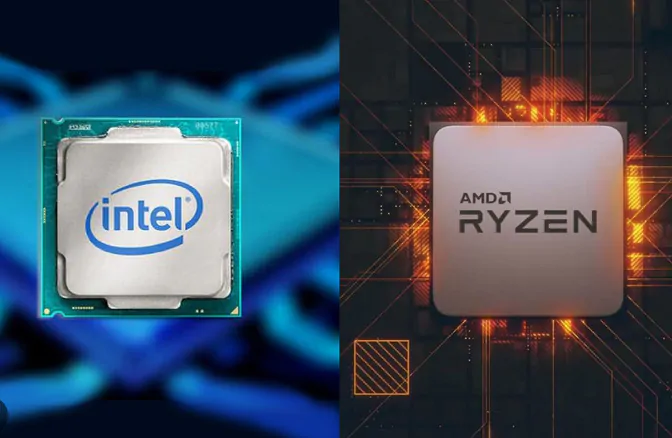Let’s be honest: buying a laptop in 2025 can feel like going to a restaurant with too many options—you just want to eat, not read a novel. Whether you’re a student, a content creator, or just looking for something solid for everyday tasks, one thing you cannot afford to overlook is the processor.
In this post, we’ll break down the minimum Intel and AMD processors you should go for based on your needs
1. For Students & Casual Users
Basic Tasks: Browsing, Typing, Watching YouTube, and Zoom Calls
Minimum Intel: Intel Core i5 (8th Gen or newer)
AMD Equivalent: AMD Ryzen 3 3000 series or Ryzen 5 3000 series
These chips are the sweet spot for casual users. The 8th Gen i5 brought a serious jump in core count (quad-core became standard), which means you’ll be able to run Chrome (even with your 37 open tabs) without the fan sounding like a jet engine.
Other recommendations:
- Go for 8GB RAM minimum
- SSD (at least 256GB) – don’t go near HDDs in 2025 (except it comes in alongside an SSD)
- Full HD screen (1920×1080)
Why it matters:
Anything less than an i5 8th Gen or Ryzen 3 3200U and you’ll be praying your laptop doesn’t freeze during your online test.
2. For Professionals & Remote Workers
Tasks: Emails, Presentations, Light Excel Work, Light Design Work
Minimum Intel: Intel Core i5 (10th Gen or newer)
AMD Equivalent: Ryzen 5 4000 or 5000 series
These chips are built for multitasking. The 10th Gen Intel CPUs improved on efficiency and graphics—perfect for light photo editing, spreadsheets with 1000 rows, and having Zoom, Slack, and Chrome open at the same time.
Other recommendations:
- 16GB RAM if your budget allows (but 8GB can still work)
- Backlit keyboard (because let’s be real—power cuts are still a thing)
- USB-C port for fast charging and docking
Why it matters:
You need speed and reliability, not a spinning wheel while you’re trying to meet a deadline.
3. For Creators & Designers
Tasks: Photoshop, Lightroom, Video Editing, Canva, Content Creation
- Minimum Intel: Intel Core i7 (10th Gen or newer)
- AMD Equivalent: Ryzen 7 4000/5000 series
These CPUs give you more cores, threads, and better integrated graphics. This matters when you’re editing 4K video or batch-processing 50 images at once.
Other recommendations:
- 16GB RAM or more (for Adobe products, this is essential)
- Dedicated GPU (like NVIDIA MX450 or RTX series if possible)
- Large SSD (512GB or 1TB)
Why it matters:
Rendering videos or editing RAW photos on a weak processor is like trying to cook jollof rice with candlelight. Just don’t do it.
4. For Gamers & Power Users
Tasks: Gaming, Coding, Streaming, Virtualization, 3D Modelling
- Minimum Intel: Intel Core i7 (11th Gen or newer)
- AMD Equivalent: Ryzen 7 5000 series or Ryzen 9
If you’re gaming or using heavy software like Blender or Unity, you need power and speed. These CPUs support high-end GPUs, faster memory, and better thermal performance.
Other recommendations:
- 16GB to 32GB RAM
- RTX 3050, 4050 or higher GPU
- High refresh rate screen (120Hz or more)
Why it matters:
The difference between an 11th Gen i7 and an 8th Gen i5 in gaming is night and day. And when you’re streaming or coding for hours, you want something that can keep up.
Bonus Tips Before You Buy
- Don’t buy anything older than 8th Gen Intel or Ryzen 3000 — seriously, just walk away.
- Check battery life reviews—some AMD laptops are better in this area.
- Always match your laptop to your primary use case. Don’t overspend for power you don’t need.
Final Thoughts
At the end of the day, your processor choice sets the tone for your laptop’s entire performance.
Need help choosing the perfect laptop? Send us a DM on Instagram.




